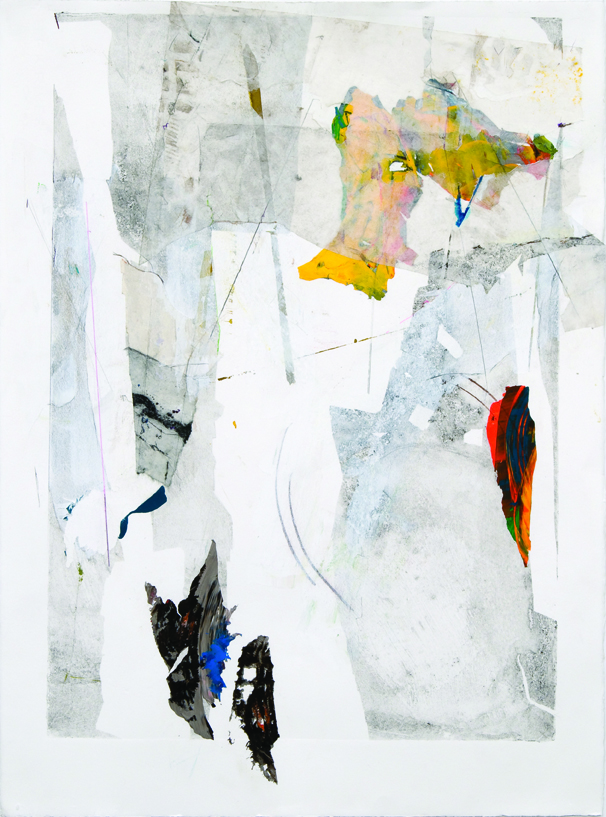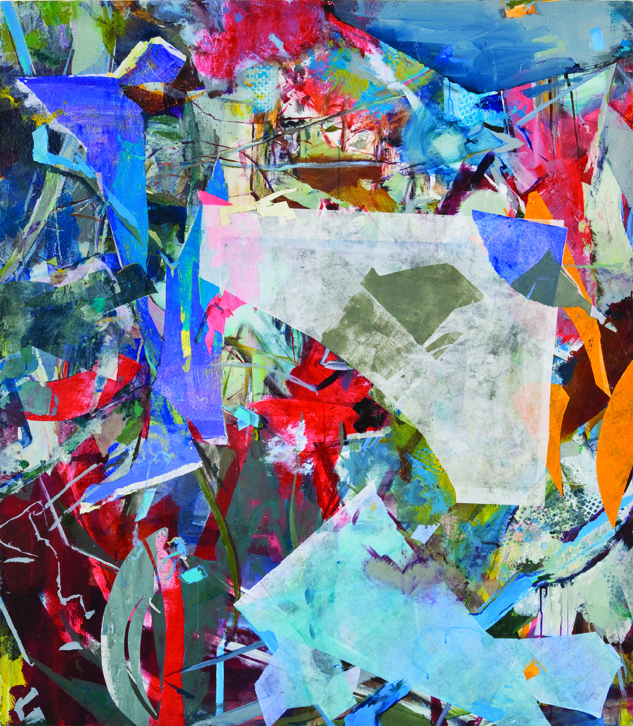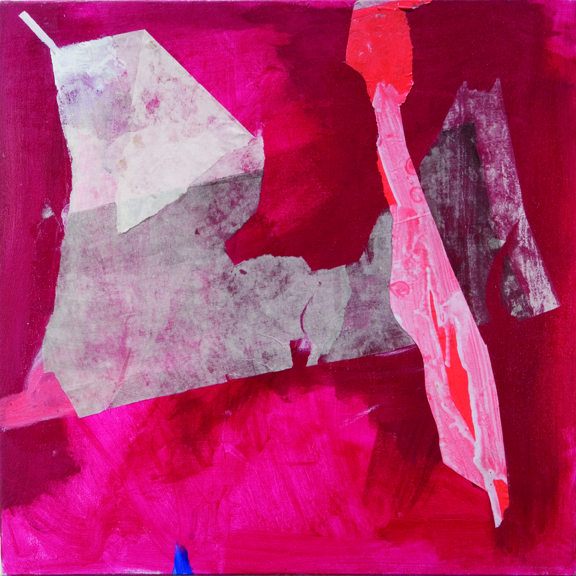Elizabeth Winton
Curated by Douglas Dunn
January 27 – March 12, 2011
Elizabeth Winton is a Brooklyn-based visual artist working primarily in painting, collage, and printmaking. She received her BA with a focus in fine art from Connecticut College in 1991. During this period and continuing after graduation, Winton studied independently in New York, working as an artist's assistant to Elizabeth Murray and Mimi Gross. Though a resident of New York City since 1991, she has also sought out concentrated periods for working in more quiet, rural environments. This includes residencies in Johnson, VT and retreats in Provincetown, MA and East Hampton, NY. Winton has exhibited her work throughout the United States, including shows at Lower East Side Printshop, New York, NY; Margaret Bodell Gallery, New York, NY; the Ruby Green Contemporary Art Center, Nashville, TN; and the Guadalupe Cultural Center, San Antonio, TX. Her most recent two-person show was Stir, Draw, Pitch: New Abstractions at the Kolok Gallery in North Adams, MA in September 2007. Winton's exhibition at CUE Art Foundation marks her first solo show in New York City.
Douglas Dunn is Artistic Director of Douglas Dunn & Dancers/Tio Grande Union Inc. Since 1971, he has been making and presenting dances in New York City and elsewhere. He also teaches Open Structures at New York University's Steinhardt School of Culture, Education & Human Development and presents Salon events at his studio in Manhattan. For more information, please visit:www.DouglasDunnDance.com
ARTIST'S STATEMENT
I build, rather than render, space in my paintings. I construct with paper and pigment; framing, folding, tearing, peeling off, and laying materials on top. I add forms to emphasize a bluntness of object or body, and simultaneously reach for a larger sense of air or expanse. Edges restrict and contain, but also interact, suggesting continuation, movement, and sensation.
My recent paintings include pieces from my prints created as collagraphs. I begin a collagraph by painting on board with clear acrylic mediums, forming an image whose later visibility is determined by the degree to which its surface collects or repels ink. The malleability and receptivity of paper to mark under the extreme physical pressure of the press allows me new access to dualities inherent in my work, such as touch and remove, distance and immediacy.
Rather than work toward polish, I am focused on individual states of formation and continued mutation. As the paper's delicate surface merges with wood and other mediums underneath, I find new range. I leave paper fragments partially adhered to my paintings, reflecting a natural state of exploration, allowing for real movement, highlighting the material's fragility, and furthering implications of impermanence and change.
CURATOR'S STATEMENT
She's restless. She dances in front of her works as if to advance them. If she could throw herself onto the canvas, her body's metamorphosed smithereens arranged to build the image, she would do so. Once there, she could further its evolution, delving from no distance. An urge to proves prowess by means of a polished, finished sense of painterly beauty is juxtaposed to, and finally defied by, a contradictory impulse toward wildness, an extravagant profusion charged by a constantly streaming, multi-layered intuition.
At a first studio visit, she shows completed paintings of various sizes. They are complex, but a consistency of luscious texture and color keeps them readable in whole, as well as in parts. There are no shapes, but instead small regions that pull this way and that, drawing the eye here and there on a map of unexplored territories eminently worthy of a visit. The paint itself and its sensuous rhythms are in themselves attractive, as if to compete with the idea of wholeness of picture. At first the works seem two-dimensional, surfaces only. But as time continues, depth appears, and the investigation begins anew. The map animates. A minute ago it was possibly representing alien worlds. Now the chart has become those worlds; now there is no end to the pleasure of entering and wandering about within them.
A second visit months later provides a shock, a break as defiant as that between High Renaissance and Baroque. The earlier works take on the aura of classics as the more recent ones apocalyptically react to them. Has she indeed thrown herself bodily onto and into the canvas? She pulls out to show an equal number of paintings and prints. The latter have become a fulcrum, she says, leverage propelling her closer to images less about what paint can do, and more about what it can say. In several of the print media, she explains, the outcome is not readily predictable. This uncertainty throws her pleasingly off her previous beauty-bound game. Other matters of accident have also come alive. Having taped images to the wall, she becomes interested in the tape as part of the image, leaving it on, peeling it off, pulling it half off. The prints also not asking for a painting's obviousness of outline, she has begun to seize the opportunity to "open up the edges."
The vagaries of printmaking having triggered release from a sobriety necessary to the earlier elegance, new worlds appear. A wild cacophony? A myriad mish-mash? Humor? At first glance, a disturbing chaos, for sure. But, strangely, and powerfully, a new unity abides. Her commentary provides clues as to how and why. She talks of what "holds" or not, what "pops" or not, what "balances" or not. Myriad shapes populate these worlds, but none is representational. They interact, and make for depth, but without creating a "scene." Friends seeing the imagery bursting inward and outward ask: why not move to sculpture? The answer is obvious: because her current interest is this very tension between intricate three-dimensionality and a two-dimensional surface. Her excitement, showing willy-nilly through a fundamental modesty, the stimulation of entrance into a newfound arena of exploration and exigency, is tangible.
View CATALOGUE
YOUNG ART CRITICS: Greg Lindquist on Elizabeth Winton





